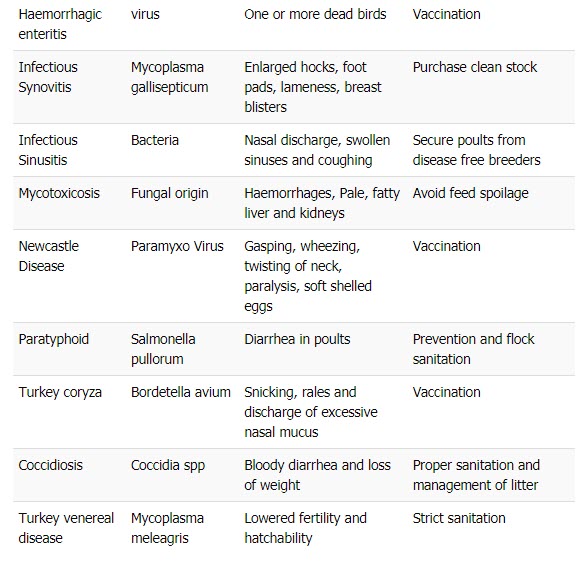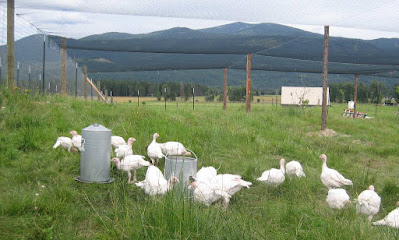A Beginner’s Guide to Turkey Farming
Turkey farming is the process of raising turkeys for the purpose of producing meat or eggs for food or money. Turkey, chicken, guinea fowl, duck and quail are all domestic birds that nutritionally and economically contribute to any country.
Turkeys are kept or reared for meat purposes. Their meat is recognized as the leanest of all poultry species. Additionally, they are consumed by almost every country across the globe. Turkey farming is popular in countries like the USA, Canada, France, Germany, Italy, UK and Netherlands. This post is a beginner guide for those who want to start turkey farming.
The scientific name of Turkey is Meleagris gallopavo, and it is a large gallinaceous bird which is a native of North America but domesticated in Europe. The breeds of turkey include:
- Beltsville Small White
- Black Turkey
- Blue Slate Turkey
- Bourbon Reds Turkey
- Broad Breasted White Turkey
- Midget White Turkey
- Narragansett Turkey
- Standard Bronze Turkey
- Royal Palm Turkey
- White Holland Turkey
Terminologies in Turkey Farming
- Tom: Matured male turkey
- Hen: Matured female turkey
- Poult: Very young turkey
- Snood or Dew bill: Fleshy protuberance close to the base of the beck
- Caruncles: Fleshy protuberance on a turkey’s head and neck. It is usually red or pink in color.
- Dewlap: Large flap skin seen immediately below the chim
- Beard: Tuft of hair attached located in the upper chest region
- Strut: Male turkey’s mating behavior
Other important information about turkeys are described as follows:
De-beaking. This is the reduction of the beak’s length in order to prevent cannibalism and feather picking. It is carried out at 4-5 weeks of age. While debeaking, the tool must be very hot and should not be too close to the nostrils.
De-snooding. This is the removal of the snood or dewbill in order to prevent the head from getting injured while fighting or picking. By pressing the snood at a day old using the thumbnail or finger would remove it. A sharp scissor can be used to cut off the snood when the poult is 3 weeks old.
De-toeing or toe clipping. This is the removal of the toenail and it is usually done at day old.
A sexually mature female turkey should start laying in the 30th week of age and the egg-laying period lasts for 24 weeks starting from the day the first egg is laid. Under proper artificial lighting and feeding management, a female turkey will be laying around 60-100 eggs every year. Turkeys usually lay their eggs in the afternoon, and their eggs are tinted and weigh around 85 grams. The eggs are also pointed at one end with a very strong shell.
Management Practices in Turkey Farming
Incubation
A fertile turkey egg has an incubation period of 28 days. The eggs can be incubated in two different ways which are:
Natural Incubation
Artificial Incubation
Natural Incubation
Turkeys normally can brood on their eggs and they can hatch between 10-15 fertile eggs. To achieve a higher hatch-ability rate, only clean, well-formed eggs should be set for incubation.
Artificial Incubation
Under this method of incubation, an incubator is used in hatching the eggs. The temperature and relative humidity in setter and hatcher are as follows:
- Setter: 99.5oF temperature and 63% humidity
- Hatcher: 99.5oF and 85-90% humidity
The eggs should be turned hourly every day and their collection should be done frequently in order to avoid breakage and soiling and to improve hatchability.
Brooding in Turkey Production
Day-old Poults are brooded for 4 weeks or to about 6 weeks in the cold period. Gas brooder or infra-red bulb could be used as a source of heat or the traditional brooding systems such as coal stoves could be adopted.
Turkeys are not the best starters in their life and will really need some tender loving care to get them safely through the first four weeks of life. The average mortality rate is 6-10% during this period. Young poults by nature are reluctant to eat and drink in the first few days of life, primarily because of bad eyesight and nervousness. Hence, they have to be force-fed.
 |
| floor space |
- Turkeys can be fed with pelleted feeds or mash
- They need higher energy, protein, mineral, and vitamins than chickens
- Male turkeys are raised separately from the female for best performance.
- Feed should be provided in feeding troughs and not on the bare floor
- Don’t change diet immediately but gradually
- Provide them with constant clean water always
- To avoid leg weakness, provide your turkeys with shell grit (20-40 grams/day)
- When the weather is hot, give them more water to drink
- Feed when the weather is cool and avoiding feeding when the weather is hot
Nutritional Requirement of Turkey
 |
| Nutritional requirement of turkey |
Body Weight and Feed Consumption Rate of Turkeys
 |
| Body Weight and Feed Consumption Rate of Turkeys |
Turkey Feed Formula
Feed your turkey poult with chick mash for the first 6 weeks of their life. Then continue with grower mash after.
Turkey Poult Feed Formula
| Ingredient | Quantity (kg) |
|---|---|
| Maize | 570 |
| Wheat Offal | 120 |
| Soya Bean Meal | 153 |
| Groundnut Cake | 120 |
| Bone Meal | 20 |
| Limestone | 10 |
| Chick Premix | 2.5 |
| Salt | 2.5 |
| Methionine | 1 |
| Lysine | 1 |
| Total | 1000 |
Growing and Adult Turkey Feed Formula
| Ingredient | Quantity (kg/100kg) |
|---|---|
| Maize | 45 |
| Soya Meal | 7.5 |
| Wheat Offal | 12 |
| Limestone | 5 |
| Bone Meal | 2.5 |
| Palm Kernel Cake | 12 |
| Groundnut Cake | 15 |
| Premix | 0.25 |
| Toxin Binder | 0.15 |
| Salt | 0.3 |
| Super Liv | 0.05 |
| Methionine | 0.15 |
| Lysine | 0.1 |
| Total | 100 kg |
Economic Parameters of Turkeys
 |
| Economic Parameters of Turkeys |
Common Diseases of Turkey
 |
| Common Diseases of Turkey |
| Age | Vaccine | Route of Administration |
|---|---|---|
| Day 1 | 1st NDV Lasota | Spray or oral |
| Week 6 | Fowl Pox | Wing Web |
| Week 9-10 | 2nd NDV Lasota | Oral |
| Week 12 | Fowl Cholera | Oral |
| Week 15 | 3rd NDV Lasota | Oral |
Tags:
Poultry


